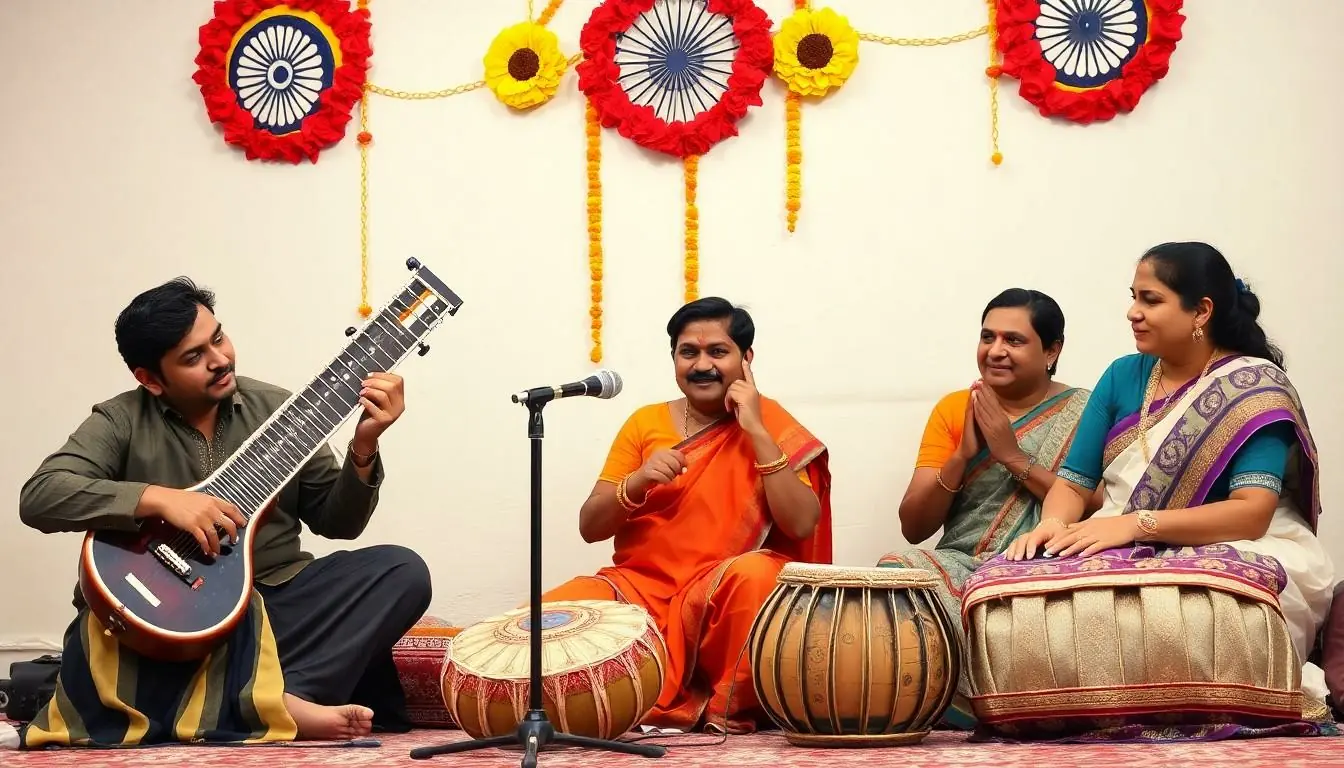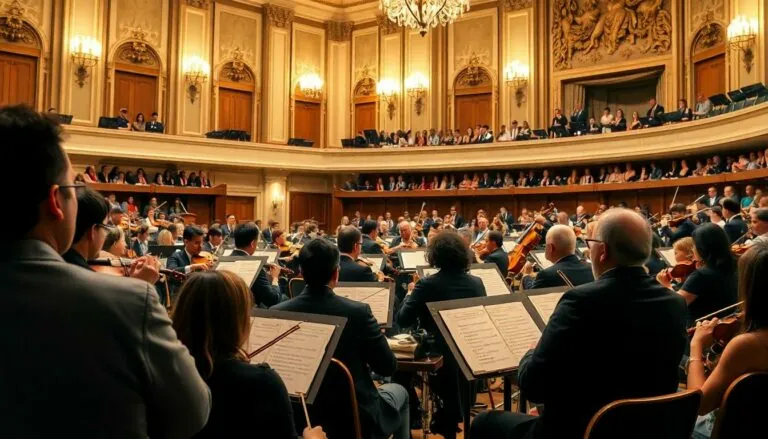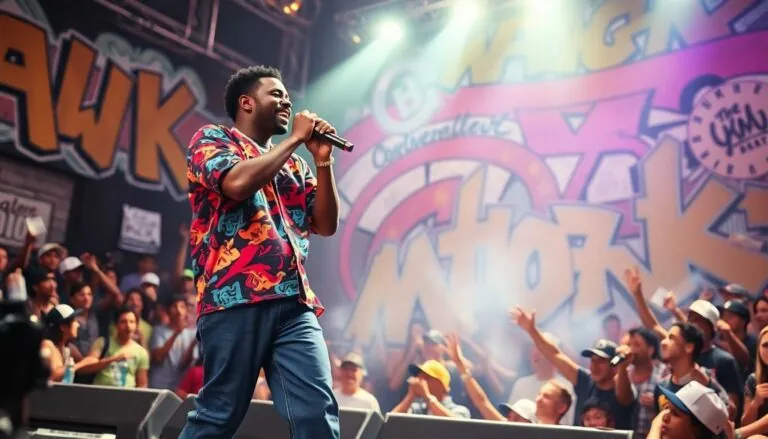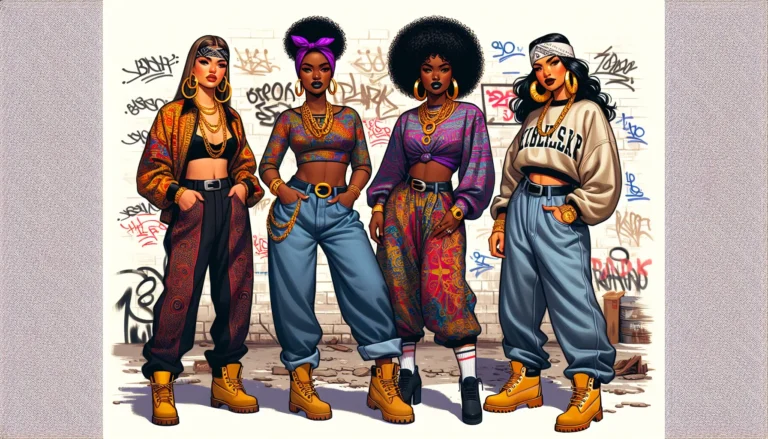Table of Contents
ToggleClassical Indian music is like a delicious curry—rich, complex, and packed with layers that surprise and delight. It’s not just a genre; it’s a vibrant tapestry woven from centuries of tradition, emotion, and spirituality. Whether it’s the soulful strains of a sitar or the rhythmic beats of a tabla, this music has a way of grabbing the heart and refusing to let go.
Imagine sitting in a serene courtyard, the sun setting, as melodious notes dance in the air. Classical Indian music transports listeners to a world where every note tells a story. It’s an art form that invites everyone to experience its beauty, whether you’re a seasoned aficionado or just curious. Dive in and discover why this enchanting music is more than just sound—it’s an experience that resonates deep within the soul.
Overview of Classical Indian Music
Classical Indian music embodies a profound art form that intertwines tradition with emotional depth. It reflects a rich cultural heritage, resonating with listeners through its diverse expressions.
Historical Background
Classical Indian music traces its roots to ancient texts like the Natya Shastra, dated around 200 BCE. Over centuries, it evolved through cultural exchanges and royal patronage, enriching its forms and styles. The system of Raga and Tala emerged during medieval times, shaping performance practices. Prominent schools, such as Hindustani and Carnatic, developed, highlighting regional variations. Influences from religious rituals and folk traditions significantly shaped the music’s evolution. Well-known composers, like Tansen and Thyagaraja, contributed timeless pieces, further deepening the music’s historical legacy.
Key Characteristics
Distinctive features define classical Indian music, creating its unique sound. Ragas serve as melodic frameworks, evoking specific emotions and moods. Each raga encompasses a set of notes, while time and season dictate their performance. Talas provide rhythmic structure, organizing beats into cycles. Improvisation plays a crucial role, allowing musicians to express creativity within established forms. Traditional instruments, including the sitar and tabla, contribute to the music’s texture, enriching its auditory experience. Vocalizations, such as Alap and Taan, showcase artist virtuosity, while lyrical themes often draw on spirituality and nature.
Major Styles of Classical Indian Music

Classical Indian music features two major styles: Hindustani and Carnatic. Each style carries its unique characteristics and traditions.
Hindustani Classical Music
Hindustani classical music originates from North India, showcasing rich influences from Persian and Mughal traditions. It emphasizes raga, a melodic framework focusing on specific emotions, and tala, which provides a rhythmic cycle. Instruments like the sitar and sarod play significant roles in Hindustani performances, allowing for intricate improvisation. Vocalists often explore various forms, including dhrupad and khayal, demonstrating vocal techniques and emotional depth. This style thrives on improvisation, enabling performers to present their creativity while adhering to established rules.
Carnatic Classical Music
Carnatic classical music finds its roots in South India, reflecting a deep connection to spirituality and devotion. This style prioritizes compositional works, often presenting compositions called kritis that highlight devotion to deities. The music relies heavily on vocal performances, with instruments like the veena and mridangam accompanying the singer. Specific ragas and talas feature prominently, supporting structured improvisations. Unique practices such as manodharma allow performers to showcase creativity while remaining rooted in tradition. This style emphasizes lyrical content, often conveying stories and spiritual themes.
Important Instruments in Classical Indian Music
Classical Indian music features an array of instruments, each integral to its distinct sound and emotional depth. These instruments can be categorized primarily into string instruments and percussion instruments.
String Instruments
Sitar stands out as one of the most iconic string instruments. It features a resonant body, long neck, and sympathetic strings that enhance its melodic qualities. The sarod, another significant instrument, produces a deep, rich sound and is known for its unique playing technique. Veena, prominent in Carnatic music, boasts a rounded body and multiple strings, playing an essential role in religious and classical compositions. Each of these instruments contributes to the overall texture of the music, allowing for intricate melodies and profound expressions of emotion.
Percussion Instruments
Tabla is a central percussion instrument in Hindustani music, renowned for its dynamic range and rhythmic complexity. Comprising two hand-played drums, it creates intricate patterns that accompany melodic lines. The mridangam serves a similar purpose in Carnatic music, characterized by its barrel shape and deep tones, often providing a foundational rhythm in performances. These percussion instruments add layers of excitement and depth, engaging the listener and complementing the melodic elements of classical Indian music.
Prominent Composers and Musicians
Classical Indian music features a rich tapestry of composers and musicians, both historical and contemporary, who have shaped its development.
Historical Figures
Tansen stands as one of the most famed figures in Hindustani classical music. Known for his exceptional vocal skills, he was a key musician in the Mughal court of Akbar. His compositions often emphasized ragas that express deep emotions. Another significant name is Annamacharya, recognized for his devotion to Lord Venkateswara, with many kritis becoming staples in Carnatic music performances. Thyagaraja, a leading composer in the Carnatic tradition, is celebrated for his devotional songs that portray intense spirituality. Each of these musicians contributed uniquely, influencing generations of performers.
Contemporary Artists
Zakir Hussain embodies the spirit of classical Indian music today. This master tabla player is renowned for his performances that blend tradition with innovation, captivating audiences worldwide. Ravi Shankar, although he passed in 2012, significantly popularized Indian classical music on the global stage, particularly through his sitar. Shankar’s collaborations with western musicians opened new pathways for appreciation. Vocalist Aruna Sairam is notable as well, emphasizing the emotive power of Carnatic music. Her performances showcase a blend of traditional and modern elements that resonate with diverse listeners. Each contemporary artist continues to push boundaries while honoring their roots.
The Role of Classical Indian Music in Culture
Classical Indian music plays a vital role in shaping cultural identity and spiritual practices. It embodies the essence of tradition and emotional expression in diverse settings.
Spiritual Significance
Spirituality thrives within classical Indian music. Emotions arise through the use of ragas that evoke specific feelings, making this art form deeply connected to meditation and ritual. The music serves as an offering, enhancing spiritual experiences in temples and during festivals. Both Hindustani and Carnatic traditions emphasize devotion, with compositions often centered on divine themes. Performances become acts of worship, enriching the cultural fabric and nurturing a communal bond. Musicians embrace these spiritual dimensions, using their artistry to deepen connections to the divine and to themselves.
Influence on Other Music Genres
Classical Indian music influences numerous global genres. Elements from this tradition inspire jazz, fusion, and even electronic music, reflecting its adaptability. Many artists incorporate ragas and talas, blending them with contemporary sounds. Collaborations between Indian musicians and Western artists often result in vibrant new expressions that resonate with broader audiences. Moreover, popular music in India draws heavily from classical roots, integrating melodic structures and instrumentation. This fusion showcases the timeless appeal of classical music while introducing its rich heritage to diverse cultures. The influence remains evident as new generations of musicians experiment with traditional elements, ensuring the legacy continues.
Classical Indian music stands as a testament to the rich tapestry of cultural heritage and emotional depth. Its ability to evoke profound feelings and connect with listeners across generations is unmatched. The intricate interplay of ragas and talas not only showcases technical mastery but also invites personal interpretation and expression.
As this art form continues to evolve, it remains a vital part of spiritual practices and cultural identity. The fusion of traditional elements with contemporary influences ensures that classical Indian music will thrive, captivating new audiences while honoring its storied past. Embracing this musical journey opens the door to a deeper understanding of life’s emotional landscape.






